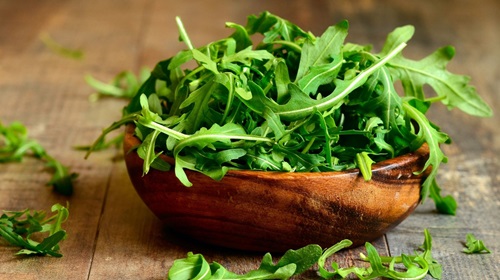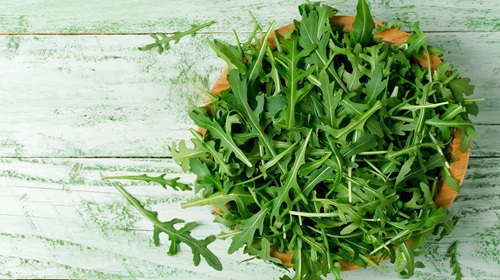Oct 31st 2024
How to Grow Hydroponic Arugula
Often called "rocket" or "roquette," arugula is a leafy green that grows swiftly in cold regions and adds an acidic, mustard-like flavor to salads. Arugula is native to Turkey, western Asia, and the drier parts of Europe, especially Italy and the Mediterranean region.
It belongs to the Brassicaceae family, which also contains mustard, and is related to other common garden vegetables like kale, broccoli, and cabbage. Arugula is commonly used to add flavor to salads since it grows rapidly and tastes richer than most greens.
How to Use Arugula
Although arugula is frequently found in grocery store as a "mixed greens" bundle and a favorite in salads, there are many more uses for this arugula. It may be layered in a sandwich, added to your favorite roasted vegetables, tossed with pasta, or used to pizza or baked potatoes. Being a very sensitive leaf, it cooks much more quickly than heartier vegetables and is best eaten raw. For maximum impact, add it right before serving or right after cooking. Arugula will give your favorite foods a little kick no matter how you serve it.

The finest health advantages of arugula are preserved when it is served raw, which is one of the reasons it is recommended. It is rich in gluconates and antioxidants, two healthy substances that are good for everyone. According to some, arugula can help reduce inflammation, and its high Vitamin K content is beneficial for bones, especially in avoiding osteoporosis. It may even lower your chance of getting diabetes or heart disease and help prevent some types of cancer.
Hydroponic Arugula vs Soil-Grown
Arugula cultivated hydroponically differs from arugula grown on soil in a number of significant ways:
- Due to the constant and direct access to water and nutrients, hydroponic arugula usually develops more quickly than soil-grown plants, resulting in more frequent harvests and a larger total output.
- Because hydroponic systems recycle water inside a closed-loop system, they consume a lot less water than conventional soil-based agricultural techniques.
- Because hydroponic arugula is less susceptible to pests and illnesses, it frequently requires fewer chemical pesticides and yields a cleaner, healthier crop.
- Because hydroponic systems, particularly vertical ones like the ALTO Garden GX Hydroponic Tower Garden make the most of available space, they are perfect for small-scale home gardening or urban farming.
- In contrast to soil-grown plants which may be more variable, arugula produced in the regulated environment of hydroponic farming can have consistent quality, look, and flavor.
Tips and Growing Conditions for Hydroponic Arugula
Light Requirements
12 to 16 hours of light each day is ideal for arugula growth. If natural sunshine isn't enough use LED grow lights set on a timer, and you can have a regular light schedule that way. It also does well in partial sun, especially in warm climates. As the weather begins to rise, provide some shade throughout the daytime hours. The ideal temperature range for arugula is between 45 and 65 degrees Fahrenheit.
pH Level
The reservoir tank's pH level affects the hyrdoponic nutrients that are available for root absorption, particularly iron and other micronutrients. A high pH reduces the solubility of iron which can cause arugula plants to exhibit symptoms of a deficit. Maintaining the pH level of most crops between 5.5 and 6.5 guarantees sufficient nutrient availability and solubility for plant maintenance.
Other Arugula Advice:
- An all-purpose hydroponic growth solution for greens will work well for arugula.
- Use a thermostat and hygrometer to maintain the previously indicated optimal temperature and humidity levels. Make the necessary adjustments to your indoor space to create the best possible growth conditions.
- To avoid the accumulation of algae and dangerous diseases, clean and disinfect your hydroponic system on a regular basis.
- You may avoid overpopulation and encourage healthy development by routinely trimming and harvesting your arugula. This method guarantees a steady supply of fresh greens and promotes the growth of new leaves.
How To Harvest Arugula So It Keeps Growing
Arugula may be harvested several times during the growing season because to its quick growth rate. Harvesting your arugula plants correctly is essential to ensuring that they continue to produce. Arugula should be harvested by cutting the leaves at the base, being careful not to harm the plant.
Cut the arugula leaves approximately 1 to 2 inches before harvesting. The plant will continue to grow and produce new leaves if some stem is left behind. Your arugula plants will continue to produce throughout the growing season if you give them the right care.
FAQs About Growing Arugula

How much time does it take to cultivate arugula?
Typically, arugula seeds take seven to ten days to sprout, and the plant may be harvested in thirty to forty days.
How frequently should arugula be watered?
Set your timers to run for 15 minutes every hour, 14 - 20 hours a day. If growing outdoors you should increase watering frequency to 15 minutes every 30 - 45 minutes to give the plants a more thorough watering.
Is it easy to cultivate arugula indoors?
Yes, growing arugula indoors with a hydroponic system is very easy. It provides the plant a regulated environment in which to develop and flourish.
How do I tell when it's time to harvest my arugula?
When the arugula leaves are three to four inches long, it's time to pick them. The younger leaves can continue to develop while the outer leaves can be harvested. This will guarantee a steady yield all through the growing season.
Can I preserve arugula after harvesting?
Indeed, arugula may be kept in the fridge in a plastic bag with a paper towel to absorb any moisture. For optimal flavor and texture, arugula should be utilized within a few days of harvesting because to its limited shelf life.




